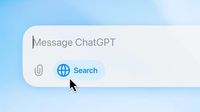As technology continues to evolve, travel planning is becoming increasingly streamlined, thanks to innovations like ChatGPT and updates to Google Maps. ChatGPT has recently introduced a feature that allows users to access interactive maps within its chat interface, marking a significant step forward in how AI can assist with travel logistics.
The author of a recent article shares their experience using ChatGPT as a travel assistant, highlighting how they have been planning trips months in advance. The AI tool helps in addressing various travel-related questions, such as what to visit, how to navigate the local transit system, and where to stay. "I ask all sorts of questions, start new chats, and then group related chats in a folder so I can easily reference them," the author explains.
As of March 26, 2025, ChatGPT has been upgraded to include a new feature that shows maps listing points of interest in chats containing location-related data. This interactive map allows users to zoom in and out and click on saved locations, providing a visual representation of travel plans. The author noted, "It’s like having Google Maps embedded in ChatGPT, only it’s not Google Maps." However, they also pointed out that the feature is still in its early stages and does not always work reliably.
When asked about the source of the map data, ChatGPT clarified that it pulls information from Google Maps or Bing Maps but noted that the appearance of the maps is not identical to either service. The author expressed hope that OpenAI would enhance this feature, given the increasing demand for integrated location information in travel planning.
Meanwhile, Google Maps is also undergoing changes to enhance user experience. Recent reports indicate that Google Maps could soon display additional information such as parking availability, fuel efficiency, and estimated time of arrival (ETA) in the first window after users enter their destination. Currently, Google Maps only shows traffic, distance to the destination, and travel time.
According to a tipster from Android Police, the new Google Maps feature is being tested on a small scale and may roll out in upcoming app updates. Users currently have to swipe up on the panel at the bottom to view fuel-efficient routes, which are marked with a "leaf" icon. This new functionality aims to provide a more comprehensive overview of the travel situation, allowing users to plan their trips more effectively.
In addition to the new features, Google Maps recently faced an issue where users' entire Timeline history disappeared on the web version. This problem arose after Google shifted to storing location history directly on devices instead of in the cloud, leading to speculation that the company might be steering away from the web version and focusing on app-exclusive updates.
As the travel landscape continues to evolve, both ChatGPT and Google Maps are making strides to improve how users plan their journeys. With the integration of interactive maps in ChatGPT and the anticipated updates to Google Maps, travelers can expect a more user-friendly experience that caters to their needs.
The author of the ChatGPT article concluded, "I’ll keep trying to make ChatGPT give me interactive maps in chats whenever I give the AI travel-related prompts. Hopefully, the AI will provide those maps more often than it does right now." This sentiment reflects a growing desire among travelers for tools that simplify the planning process and enhance the overall travel experience.
In summary, as AI tools like ChatGPT and navigation apps like Google Maps continue to innovate, the future of travel planning looks promising. These advancements not only make it easier for travelers to organize their trips but also cater to a more interactive and engaging experience.





